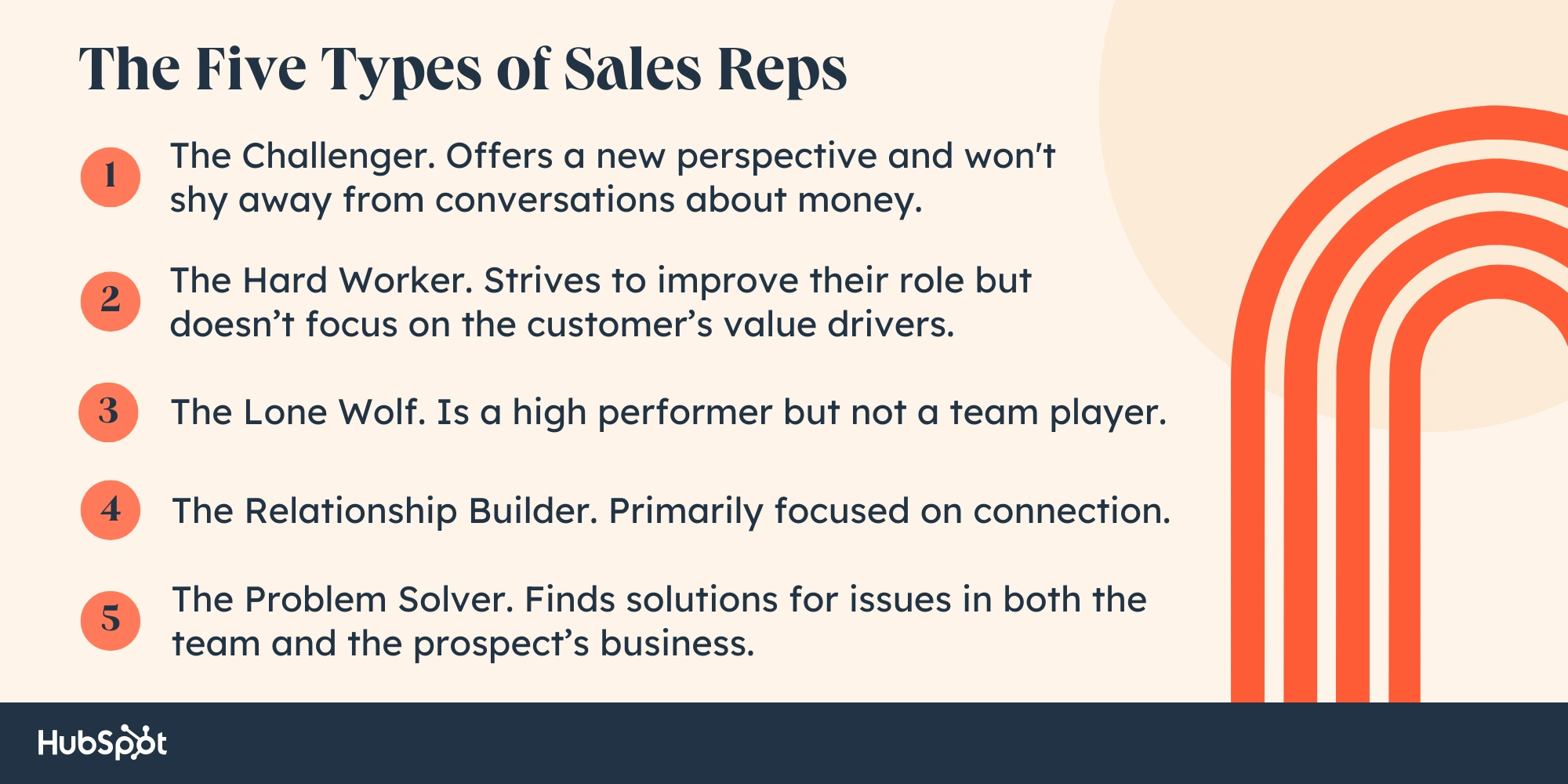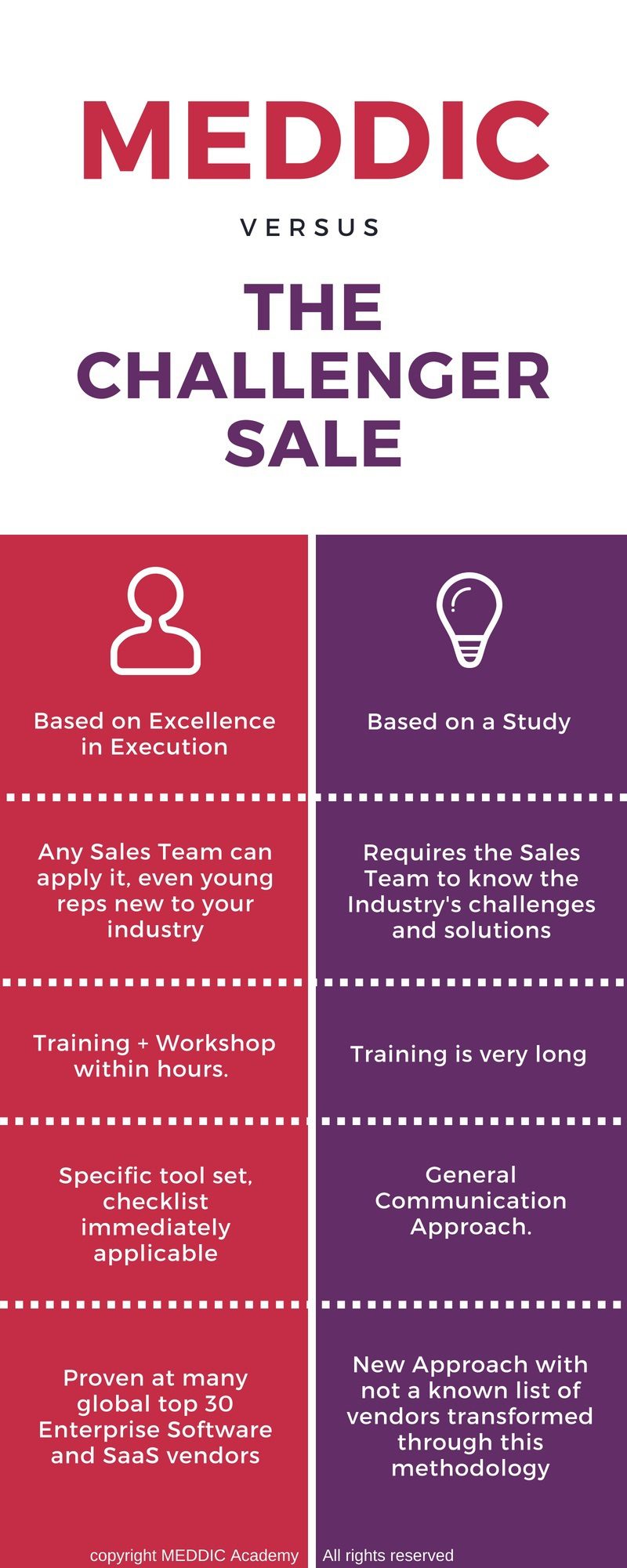The Challenger Sales Model is a unique sales strategy that requires your sales rep to take control of the sale, strip back what your prospects thought they already knew, and then teach them something new.
It’s gained popularity ever since Matthew Dixon and Brent Adamson wrote about it in their book, The Challenger Sale: Taking Control of the Customer Conversation. But how can you use it for your own sales teams? And do you really need to?
Well, Gartner research found that customers are 57% through the purchase process before they have the first meaningful contact with a seller. It shows that prospects are doing their own research before joining any sales calls. They’ve already got preconceived ideas about you and your brand. With the Challenger Sales Model, you can upturn them all.
Let’s get into that a little more…
What is the Challenger Sales Model?
The Challenger Sales Model is a methodology sales reps use to disrupt a customer’s thought process and get them to pay attention immediately. It encourages sales reps to go beyond traditional relationship-building techniques and focus on providing value through insight, education, and assertive leadership.
It does this through the three Ts: teaching, tailoring, and taking control.
Example
Imagine you’re a cleaning company studying how chains of grocery stores and restaurants can reduce their cleaning costs by 15% using eco-friendly cleaning solutions.
Challenger Sales Approach Example:
Matt: “Hi, I’m Matt from EcoClean. I’ve been studying how grocery stores can reduce cleaning costs by 15% using eco-friendly cleaning solutions. Can I share a quick insight?”
Green Grow Executive: “Sure, we currently use conventional cleaners.”
Matt: “Eco-friendly solutions not only cut costs but also improve store safety and customer satisfaction. For example, FreshMart, a similar chain, saw a 20% reduction in slip-and-fall incidents after switching. Would you be interested in a brief demo to see how this could work for Green Grow?”
Green Grow Executive: “That sounds interesting. Let’s schedule a demo.”
You’re there to provide solutions to existing problems. Even problems they didn’t know already existed. The art of mastering the Challenger Sales method lies in doing exactly what the name says; challenge your customer.
Not For the Faint-Hearted
You’ll see huge upside in reps closing deals when they reduce the emotive side of the business transaction. Research on the Challenger Sales Model has shown that those using this sales methodology are 370% more likely to close a sale (54% vs 11.5% average) in a complex sales situation than the other four types of sales reps.
Not all reps are cut out to be challenger sellers, though. A lot of the time, this method can result in honest, strong debate, and many home truths relating to a product or business. It’s not for the faint-hearted. However, if the challenger rep has done their research, there’s nothing to worry about. The customer will recognize the time and energy the rep has taken to understand the prospect’s situation.
The Challenger Sales Model is one of five sales profiles that Brent Adamson and Matthew Dixon created to fit each sales rep. The infographic below shows you in further detail…

The Core Principles of the Challenger Sales Model
Three pillars set the foundations for the Challenger Sales Model, known as the “TTT sales style”. They are as follows:
- Teaching. The challenger sales rep is there to educate and inform. They will offer the customer all of their knowledge and insights to challenge the client’s existing views. This knowledge provokes thoughts from the customer regarding what they originally knew while building elements of trust based on the professionalism your challenger rep has shown.
- Tailoring. Once your rep has pricked the customer’s interest and challenged them, they tailor your sales pitch for each customer based on their challenges and goals. This will lead to more personalized interactions and better success.
- Taking control. The challenger rep is responsible for the direction of the conversation. They can’t be afraid to question pre-existing views in a manner that doesn’t antagonize but identifies the best solutions to your customer’s queries.
The majority of your sales team will have what it takes to teach their clients something new, while tailoring a pitch to match the needs of their customers. Taking control is the difficult part of mastering the Challenger Sales Model, but it’s also the most important.
If your reps don’t take control, how can they guide the client to the best answers for their problems?
“Just as you can’t be an effective teacher if you’re not going to push your students, you can’t be an effective Challenger if you’re not going to push your customers.”
Matthew Dixon, co-author of The Challenger Sale Tweet
Who Benefits Most from the Challenger Sales Model?
Implementing the Challenger Sales Method isn’t just a one way street. There are many who benefit. Let’s take a look at some of them…
1. Sales Professionals
- Better success: Sales reps that use the challenger sales model close more deals and achieve better sales performances because they are consistent with applying the method. Reps who are trained to have a comprehensive overview of the customer and their business are more likely to provide deeper insights that set them apart from others.
- Improves sales skills: Sales reps who master the arts of being a challenger rep have a stronger ability to communicate with customers more deeply, provoking discussions that highlight value to the customer.
- Consistent selling: The structure of the model provides a consistent approach to sales, making the outcome easier to predict.
2. Customers
- Improved solutions: The customer clearly benefits from being presented with various solutions to solve the problems they face. When they’re challenged to think differently, it will often lead to innovative solutions they might not have considered.
- Education: With innovative solutions comes constant education about the challenges the customer’s business faces. Not only will this method guide them to a decision, but it has educational value.
3. Businesses Implementing the Model
- Increased revenue: If you implement the Challenger Sales Model into your business, you’ll see higher revenues as it increases the effectiveness of your team closing deals and upselling.
- An advantage over competitors: If your team digs deeper into the customer’s business, they’ll provide unique insights and challenge customers. It completely separates your team from competitors who are still driven by traditional sales techniques.
- Stronger relationships: While the challenger sales model doesn’t focus specifically on building relationships, it provides a deeper, more consultative rapport with the customer which can yield higher customer satisfaction and long-term loyalty.
4. Sales Managers
- Improved team performance: Sales managers can’t help but benefit from their team having a consistent sales process to work off of. The Challenger Sales Model puts the framework in place to drive consistent and high-level performances across your team.
- Effective coaching: With the challenger framework already in place, it will be easier for you to guide your team on how to use the Challenger Sales Method most effectively.
5. Marketing Teams
- Aligned Team Messages: The marketing team benefits from alignment with the sales team, ensuring the message is consistent and clear for marketing campaigns and materials.
- Better Content: With a consistent framework in place, the insights the Challenger Sales Model provides drive the quality of the content level up. The better the quality of content from the marketing team, the more engaged and educated your customers will feel.
Implementing the Challenger Sales Model
Implementing your Challenger Sales Model can be a difficult feat. Your sales team must be equipped with the knowledge necessary to lead their prospects to make better-informed purchasing decisions. When executed correctly, your team will tap into the prospect’s fears by showing the outcome of a delayed reaction to their problem.
With your customer feeling anxious, your sales reps should be poised to propose your product or service as the solution to their ongoing problem. You can implement the core of the Challenger Sales Model in 5 steps…
1. Build Credibility
Ensure your sales team is building credibility with your prospects through effective communication. Make a point of understanding their problems through extensive research. This is not the time to introduce your product, instead the conversation should be entirely focused on your prospect’s problems.
2. Reframe Problems
When your sales team digs deeper to try and find the root of the prospect’s challenges, they can then reframe them as an opportunity. Through this method, they force a new perspective into the discussion and, if all goes well, the prospect will start to shift their beliefs regarding what they thought the answer to their problems could be.
3. Emotional Intelligence
The Challenger Sales Model is designed to reduce emotional connection and increase data-backed facts. However, some emotion is necessary. A subconscious decision derives from the prospect’s emotional response. In fact, 95% of all purchase decision-making takes place due to an emotional connection. This statistic highlights the importance of incorporating emotion, not just facts and figures into your sales pitch. The more your prospect can relate on a personal level to your product, the more interested they will be in a purchase.
4. Propose Value
Before you jump the gun and start proposing your product as the answer to all their problems, give them an insight into what the future will look like if they act differently. Show them a bad scenario so that more favor is cast on your good scenario.
5. Present Your Product
The final step should be the easiest. The very best challenger sales reps will take the prospect’s problem and present alternative solutions without even breathing a word about your product. When they’ve built trust this way and the process has been followed correctly, the final piece to the puzzle is to put your product out there as the solution.
Potential Pitfalls and Challenges
Whilst the Challenger Sales Model can be extremely effective when used correctly, it does have its disadvantages. Like any sales methodology, the technique can be exhausted if your team uses it too much. It’s also entirely possible that your prospect will just see it as another cunning sales technique, especially if it’s not performed to its maximum potential.
Here are some common drawbacks associated with this sales methodology.
Complex Training Requirements
When you implement the Challenger Sales Model, it not only requires extensive research but also involves a lot of training and development. The training involved can be severely time-consuming, costly, and a complex procedure. Keep in mind that not every member of your team will take to the Challenger Sales Method. Not every sales rep is a challenger!
Team Resistance
The majority of sales teams are trained and accustomed to traditional sales techniques. Trying to change how your team thinks and approaches sales situations can be difficult as people don’t enjoy change. The method has a confrontational basis which can also be uncomfortable for some. It doesn’t come as second nature to a lot of sales teams. If this method isn’t managed properly, it can lead to your team pushing back.
Customer Disagreement
Let’s be honest, a lot of customers will react negatively to someone who is challenging their thought process, especially when they’re convinced they know the answer. The challenger approach can be seen as aggressive or arrogant, leading to the customer pushing back. The approach can potentially damage relationships and thus lose sales if the challenger method isn’t tailored correctly.
Lack of Alignment
Aligning your sales and marketing team is so important to provide consistent and insightful content for your prospects. The content is there to educate the audience. Without this alignment, your team’s sales effort could fall flat on its face. It’s integral that the insights your team provides are backed up by research that comes from the content your marketing team is putting out.
Not Universally Applicable
The challenger model is not universally suitable for every industry and sales company. In particular, businesses that focus on building rapport and fostering long-term relationships may not find the challenger approach appropriate. A challenger sales approach is completely out of the box and isn’t for everyone to use.
Alternative Sales Models to Consider: Can it Work With Other Methods?
Due to the complexity of the sales world, the modern-day customer will do their homework before buying. They will attempt to come up with some kind of idea of what they want, how it’s going to benefit them, and what they want to pay for it. Although most sales reps are taught to focus on selling through the benefits of the product, this isn’t necessarily the most effective approach.
To put it bluntly, customers are more diligent than ever before.
The best sales reps, however, don’t focus on just a single sales process. Putting all your eggs in one basket is rarely a wise move. After all, every customer is different and sales reps need to be able to adapt. They need to be flexible to switch up their style depending on who they’re talking with. One day they might go all in with the challenger method, the next they might need to pull off a reverse sale.
There’s a whole playbook of methods that can be used to complement the challenger method. Let’s take a look in more detail at alternative sales models, how they can help, and how they compare to the challenger method…
Traditional Selling
Going back to the basics, traditional selling is entirely focused around actively listening to your customer’s problems, and then creating a solution around their needs. Due to the new waves of sales methods, traditional selling is dated as it assumes your customer doesn’t know a lot about the product they’re searching for.
As we saw above, on average, modern customers are more than halfway through the purchasing process before directly speaking to anyone. This makes traditional selling less effective in comparison to the challenger method. Modern-day customers are simply better educated and don’t want to be on the phone for hours telling you their problems.
MEDDIC
MEDDIC is an abbreviated criteria list standing for Metrics, Economic Buyer, Decision Criteria, Decision Process, Identify Pain, and Champion.
The MEDDIC method relies on nailing each of these points with your customer to progress the deal forward. It’s a tactical sales process used as a tick box exercise for the buyer’s journey.
Unlike the Challenger method, MEDDIC is a listed methodology to improve sales, whereas Challenger is a concept of how you communicate with the customer to convince them your product is right for them. The two don’t compete with each other; they complement each other.
See the infographic below for further comparison!

SPIN Selling
SPIN stands for Situation, Problem, Implication, and Need-Payoff. Sales reps that use the SPIN method indulge their customers in a flurry of questions around those four categories to tailor the sales method to their customers. The main difference between SPIN and Challenger is that challengers teach, while SPIN sellers ask questions. Both are different approaches and should be used independently.
SPIN sellers are armed with inquisitive questions, challengers are equipped with insights to lead customers directly to their solution; the two are like chalk and cheese.
SNAP Selling
SNAP stands for Simplify, Navigate, Articulate, and Prioritize. In short, SNAP is about making the prospect’s decision as easy to make as possible. You help guide their thought process, addressing any doubts or concerns they have along the way. This leads sales reps onto articulating their value proposition in such a way that the prospect can’t help but be intrigued. All the while, they’re prioritizing the customer’s needs and preferences. It’s a great method for newcomers as it’s super easy to understand.
Challenger sellers, on the other hand, are more set on appearing as an authority in the niche. They challenge the prospect’s thinking and are knowledgeable on the stats and figures, tailoring the deal to fit the prospect’s personal needs. Both methods can work; it ultimately depends on the individual sales rep and prospect.
Consultative Selling
Unlike the rest of the methods, consultative selling is a very similar concept to the Challenger method. The Challenger rep wants to tackle the problems and solutions like a bull in a china shop. Whereas consultative selling gently seeks out the client’s problems and lays the groundwork for the customer to figure it out without telling them.
Alex from SalesStar Global thinks the challenger method is like a spinoff from consultative selling, but it’s gone a step further – that step being the education of the customers. The main difference is consultative selling can be used almost anytime, whereas the challenger method needs to be used very specifically. You need to come prepared with the facts and figures and lay it on them, and be firm and assertive when it comes to objections and doubts, carefully and skillfully reframing them to be positive opportunities.
The Future of Sales
The Challenger Sales Method is extremely effective but must be used sparingly. Since the start of 2022, clients self-reported over $1.1 billion in revenue attributed to the Challengers Sales Model. It’s a process that aims to teach, tailor, and take control of the customer’s sales journey, and it clearly works.
Not everyone in your team can be a challenger though. Some reps don’t have a confrontational bone in their bodies; they’re just not built to be brutally honest. However, it’s a strategy that can be taught with quality training, persistence, and hard work.
Remember not to use the method for every prospect. Employ prospect scoring to figure out which leads are more likely to convert through assertive facts and stats and use it on them. There’s plenty of potential in being a challenger, you’ve just got to find the right balance.





